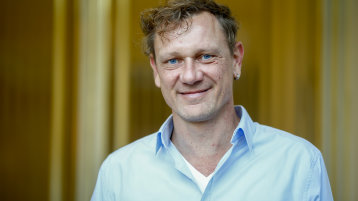Biologics – the fastest growing segment in drug discovery and development

How are bio-therapeutics produced? What is their mechanism of action? How can they be made affordable to a growing global community of patients? Prof. Dr. Jörn Stitz will work with you on answering these questions in the module "Medical Biotechnology" (WP 1).
In this subject we examine which cellular and vector components can be employed and modified to optimize production efficiency for the generation of recombinant active substances. We look at cell engineering and the utilization of genetic elements such as insulators against promoter silencing, RNA-stabilizers, matrix-attachment regions, smart vector design and a range of different gene transfer techniques. Cultivation methodologies, utilization of a variety of cellular production systems and techniques for the isolation, concentration and polishing of active substance complete the picture of currently employed methodologies in biotechnological production scenarios.
Personal details: I started my scientific career studying classical biology in my hometown Frankfurt am Meer ;0). During my tenure as a PhD-student, I got “infected” with virology and started using my growing knowledge to develop viral vectors (“gene taxis”) for somatic gene therapy. Later at Stanford University, the ETH Zurich and affiliated with various international biotechnology companies, I got increasingly interested in exploiting the opportunities these gene transfer devices provide as a toolbox for the discovery of novel genes causing diseases, antibody discovery and the development of novel vaccines against viral infections. To conduct cutting edge research in this field with my research team, to collaborate with international biotechnology companies and to mediate my fascination for this exciting world to students is my passion.
Research profile: My research team focuses on the generation of high-level expression-mediating DNA-vector designs (viral and non-viral) and uses advanced expression cassettes and gene transfer methods for the establishment of recombinant mammalian cell lines. Consequently, we achieve high-yield production of biologics to lower production costs for future medications. We develop innovative virus-like particle (VLP)-vaccines, optimize viral and transposon vectors for cell and gene therapeutics to fight – and potentially ultimately prevent – genetically inherited and infectious diseases, cancer and other plagues of human mankind.
